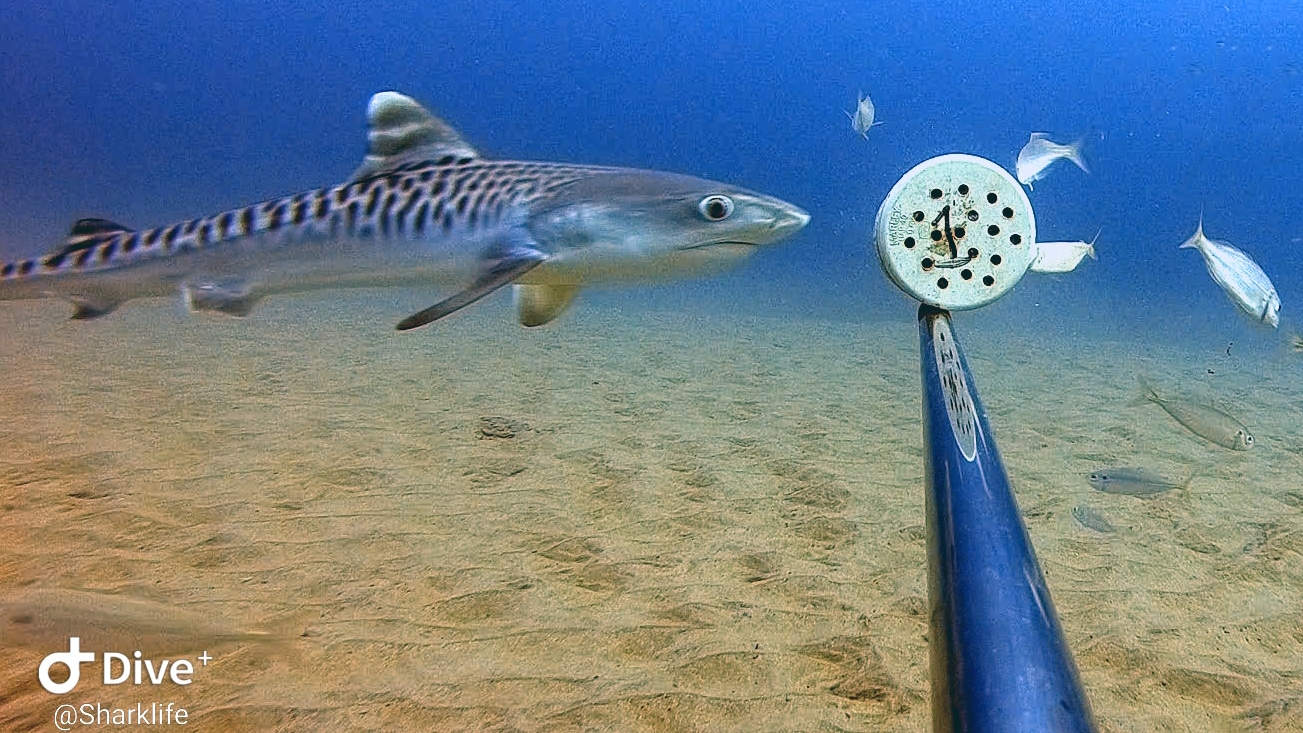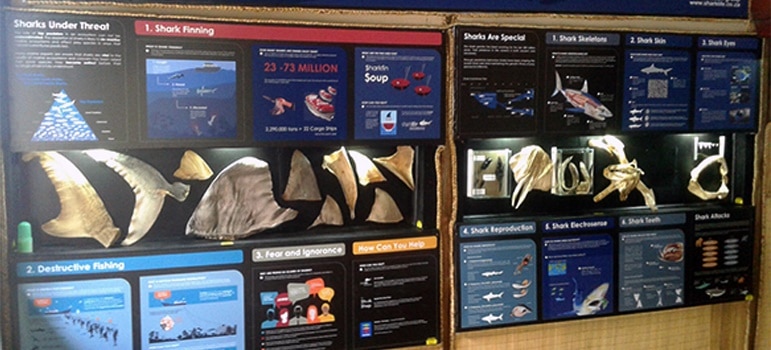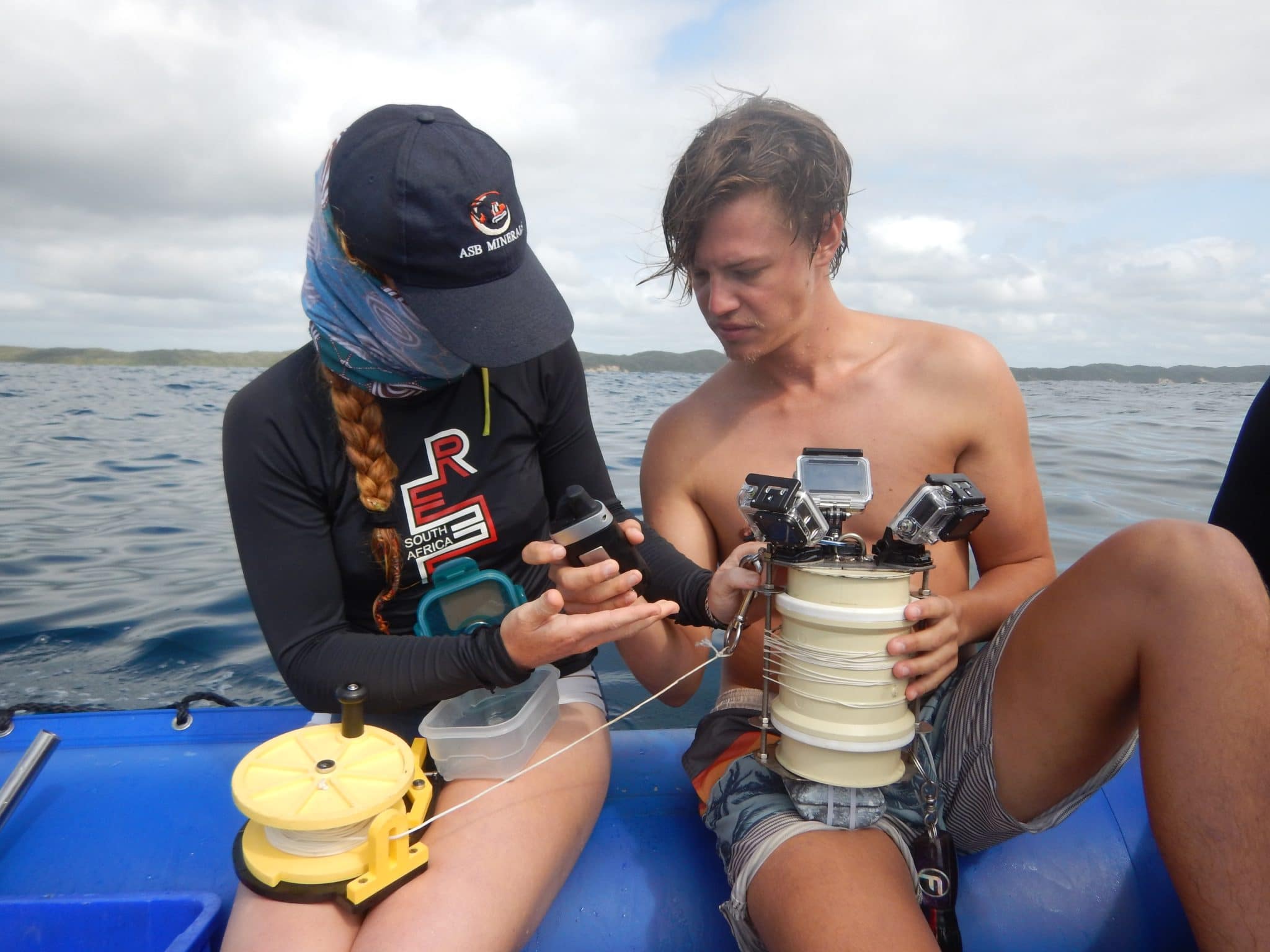Marine Life & Conservation Blogs
All about Sharklife

There is nothing quite like seeing an apex predator in the wild and divers are very fortunate to have the privilege to get up close and personal with one of the world’s most striking predators. South Africa is home to a great number of shark species that attract thousands of tourists every year. Great Whites, Tigers and Bull sharks are just some examples of over 100 different shark species living in the oceans around the South African coastline.
With such an array of species, it’s no wonder there are so many research and conservation organizations in the country that do exceptional work. These entities are collecting important data that is showing how important the shark species is, not only the ocean’s survival, but that of mankind too.
So, what’s the big deal, they’re just fish with teeth?
Sharks have an undeserved reputation as being man-eaters. Considering the millions of people that use the ocean everyday whether for recreational or occupational use, as few as 10 people die from shark interactions annually. If they were the man-eaters we made them out to be, that number would be much higher. More people die from accidents with household appliances in one year than people have died from sharks in the last 100 years.
The shark is an important part of the ocean’s ecosystem, but more importantly it’s their role in the survival of the planet we need to be concerned about. With an estimated 100 million sharks being killed every year, ocean ecosystems around the world have been severely destabilized and unbalanced. Sharks help maintain a healthy gene pool by predating on the weakest of their prey, ensuring the strongest survive to continue the species.
If we wiped out the Great White Shark population in South Africa, there would be an abundance of seals, this growing population of seals, now the new apex predator in the area, would very soon consume to a point of extinction many crustaceans and small bait fish resulting a complete collapse of many fishing industries and worse, the collapse of an entire ecosystem.
Education about the importance of sharks and changing people’s perception of sharks are small actions that can make positive change. An organization that has been working hard to educate people about sharks is “Sharklife”.
I recall becoming a Sharklife Instructor in 2008 when the organization had just started offering a range of courses on several of the shark species found in South Africa. Courses were offered on specific sharks and required a number of dives to study the shark’s behavior and unique characteristics. One of the challenges we faced as instructors was guaranteeing shark sittings on training dives. Some sharks are much easier to encounter reliably than others.
We had some interesting dives experimenting with different non-invasive methods of attracting sharks for our students to study. The most noteworthy of these experiments was trying find what would attract Bull Sharks. These elusive predators can be very inquisitive and engaging which made for some exciting learning experiences.
Today Sharklife has a permanent base in Sodwana Bay, South Africa. At the current premises, Grant Smith, Sharklife managing director, oversees a number of research projects and conducts research internships for candidates from all over the world. In addition to the various shark courses on offer, there is a shark museum with some fascinating displays and shop where you can purchase a host of different shark related products.
Sharklife Objective:
Through scientific research, education and awareness bring about positive change to the current destructive trends of ocean exploitation.
Sharklife Current Aims:
- To develop a compassionate desire to conserve sharks by altering public misconceptions about sharks and replacing the “Jaws” syndrome with positive understanding and respect.
- Reduce anthropogenic threats to over exploited marine species by increasing awareness and encouraging sustainable seafood choices.
- Increase marine tourism and transform shark populations into a sustainable living resource by developing educational ocean experiences for all South African’s
In line with aim number 2, one of their achievements was the removal of shark nets in the Rocky Bay area in Kwa-Zulu Natal. An initiative that started in 2008 and took years of relentless campaigning resulted in the removal of the shark nets in this Marine Protected Area. The capture of 14 Tiger Sharks on the 18th April 2012 was a catalyst that renewed efforts for the lifting of the nets and on the 30th April 2014 the nets were lifted for the last time.
More information about this campaign can be found here: https://www.sharklife.co.za/index.php/our-projects/completed-projects/shark-net-removal
How can you get involved?
Visit their website, www.sharklife.co.za and sign up for free shark course. You can even adopt a shark and join as a monthly member.
Regardless of the organization you support, something has to be done before it really is too late to turn back and recover. There are hundreds if not thousands of initiatives out there to get involved with or contribute to and I know all of them appreciate the smallest donation of time or money.
Personally, I would hate to never again see the wonder in a diver’s eyes when they interact with a shark for the first time.
Article by PJ Prinsloo – www.pjptech.co.za
Marine Life & Conservation Blogs
Creature Feature: Dusky Shark

 In this series, the Shark Trust will be sharing amazing facts about different species of sharks and what you can do to help protect them.
In this series, the Shark Trust will be sharing amazing facts about different species of sharks and what you can do to help protect them.
This month we’re taking a look at the Dusky Shark, a highly migratory species with a particularly slow growth rate and late age at maturity.
Dusky sharks are one of the largest species within the Carcharhinus genus, generally measuring 3 metres total length but able to reach up to 4.2 metres. They are grey to grey-brown on their dorsal side and their fins usually have dusky margins, with the darkest tips on the caudal fin.
Dusky Sharks can often be confused with other species of the Carcharhinus genus, particularly the Galapagos Shark (Carcharhinus galapagensis). They have very similar external morphology, so it can be easier to ID to species level by taking location into account as the two species occupy very different ecological niches – Galapagos Sharks prefer offshore seamounts and islets, whilst duskies prefer continental margins.
Hybridisation:
A 2019 study found that Dusky Sharks are hybridising with Galapagos Sharks on the Eastern Tropical Pacific (Pazmiño et al., 2019). Hybridisation is when an animal breeds with an individual of another species to produce offspring (a hybrid). Hybrids are often infertile, but this study found that the hybrids were able to produce second generation hybrids!
Long distance swimmers:
Dusky sharks are highly mobile species, undertaking long migrations to stay in warm waters throughout the winter. In the Northern Hemisphere, they head towards the poles in the summer and return southwards towards the equator in winter. The longest distance recorded was 2000 nautical miles!
Very slow to mature and reproduce:
The Dusky Shark are both targeted and caught as bycatch globally. We already know that elasmobranchs are inherently slow reproducers which means that they are heavily impacted by overfishing; it takes them so long to recover that they cannot keep up with the rate at which they are being fished. Dusky Sharks are particularly slow to reproduce – females are only ready to start breeding at roughly 20 years old, their gestation periods can last up to 22 months, and they only give birth every two to three years. This makes duskies one of the most vulnerable of all shark species.
The Dusky Shark is now listed on Appendix II of the Convention on the Conservation of Migratory Species (CMS), but further action is required to protect this important species.
Scientific Name: Carcharhinus obscurus
Family: Carcharhinidae
Maximum Size: 420cm (Total Length)
Diet: Bony fishes, cephalopods, can also eat crustaceans, and small sharks, skates and rays
Distribution: Patchy distribution in tropical and warm temperate seas; Atlantic, Indo-Pacific and Mediterranean.
Habitat: Ranges from inshore waters out to the edge of the continental shelf.
Conservation status: Endangered.
For more great shark information and conservation visit the Shark Trust Website
Images: Andy Murch
Diana A. Pazmiño, Lynne van Herderden, Colin A. Simpfendorfer, Claudia Junge, Stephen C. Donnellan, E. Mauricio Hoyos-Padilla, Clinton A.J. Duffy, Charlie Huveneers, Bronwyn M. Gillanders, Paul A. Butcher, Gregory E. Maes. (2019). Introgressive hybridisation between two widespread sharks in the east Pacific region, Molecular Phylogenetics and Evolution 136(119-127), https://doi.org/10.1016/j.ympev.2019.04.013.
Marine Life & Conservation Blogs
Creature Feature: Undulate Ray

 In this series, the Shark Trust will be sharing amazing facts about different species of sharks and what you can do to help protect them.
In this series, the Shark Trust will be sharing amazing facts about different species of sharks and what you can do to help protect them.
This month we’re looking at the Undulate Ray. Easily identified by its beautiful, ornate pattern, the Undulate Ray gets its name from the undulating patterns of lines and spots on its dorsal side.
This skate is usually found on sandy or muddy sea floors, down to about 200 m deep, although it is more commonly found shallower. They can grow up to 90 cm total length. Depending on the size of the individual, their diet can range from shrimps to crabs.
Although sometimes called the Undulate Ray, this is actually a species of skate, meaning that, as all true skates do, they lay eggs. The eggs are contained in keratin eggcases – the same material that our hair and nails are made up of! These eggcases are also commonly called mermaid’s purses and can be found washed up on beaches all around the UK. If you find one, be sure to take a picture and upload your find to the Great Eggcase Hunt – the Shark Trust’s flagship citizen science project.
It is worth noting that on the south coasts, these eggcases can be confused with those of the Spotted Ray, especially as they look very similar and the ranges overlap, so we sometimes informally refer to them as ‘Spundulates’.
Scientific Name: Raja undulata
Family: Rajidae
Maximum Size: 90cm (total length)
Diet: shrimps and crabs
Distribution: found around the eastern Atlantic and in the Mediterranean Sea.
Habitat: shelf waters down to 200m deep.
Conservation Status : As a commercially exploited species, the Undulate Ray is a recovering species in some areas. The good thing is that they have some of the most comprehensive management measures of almost any elasmobranch species, with both minimum and maximum landing sizes as well as a closed season. Additionally, targeting is entirely prohibited in some areas. They are also often caught as bycatch in various fisheries – in some areas they can be landed whilst in others they must be discarded.
IUCN Red List Status: Endangered
For more great shark information and conservation visit the Shark Trust Website
Image Credits: Banner – Sheila Openshaw; Illustration – Marc Dando
-

 News3 months ago
News3 months agoHone your underwater photography skills with Alphamarine Photography at Red Sea Diving Safari in March
-

 News3 months ago
News3 months agoCapturing Critters in Lembeh Underwater Photography Workshop 2024: Event Roundup
-

 Marine Life & Conservation Blogs3 months ago
Marine Life & Conservation Blogs3 months agoCreature Feature: Swell Sharks
-

 Blogs2 months ago
Blogs2 months agoMurex Resorts: Passport to Paradise!
-

 Blogs2 months ago
Blogs2 months agoDiver Discovering Whale Skeletons Beneath Ice Judged World’s Best Underwater Photograph
-

 Gear Reviews2 weeks ago
Gear Reviews2 weeks agoGEAR REVIEW – Revolutionising Diving Comfort: The Sharkskin T2 Chillproof Suit
-

 Marine Life & Conservation2 months ago
Marine Life & Conservation2 months agoSave the Manatee Club launches brand new webcams at Silver Springs State Park, Florida
-

 Gear Reviews3 months ago
Gear Reviews3 months agoGear Review: Oceanic+ Dive Housing for iPhone
























